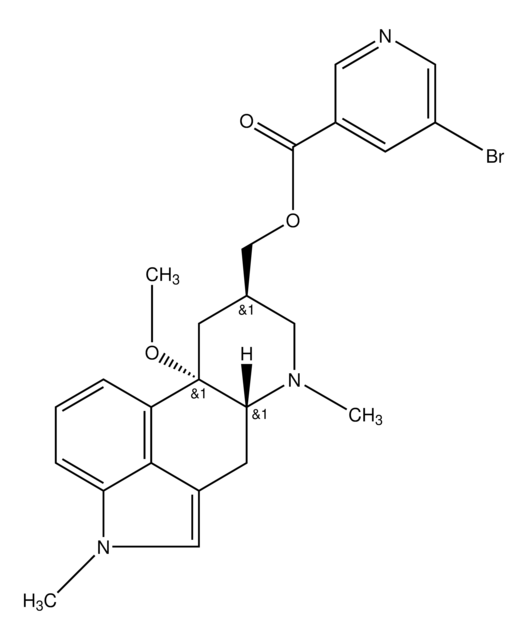1457607
USP
Nateglinid
United States Pharmacopeia (USP) Reference Standard
Synonym(e):
N-[(trans-4-Isopropylcyclohexyl)-carbonyl]-D-phenylalanin, Fastic, Starlix, Starsis
About This Item
Empfohlene Produkte
Qualität
pharmaceutical primary standard
API-Familie
nateglinide
Hersteller/Markenname
USP
Anwendung(en)
pharmaceutical (small molecule)
Format
neat
SMILES String
CC(C)[C@@H]1CC[C@H](CC1)C(=O)N[C@H](Cc2ccccc2)C(O)=O
InChI
1S/C19H27NO3/c1-13(2)15-8-10-16(11-9-15)18(21)20-17(19(22)23)12-14-6-4-3-5-7-14/h3-7,13,15-17H,8-12H2,1-2H3,(H,20,21)(H,22,23)/t15-,16-,17-/m1/s1
InChIKey
OELFLUMRDSZNSF-BRWVUGGUSA-N
Angaben zum Gen
human ... ABCC8(6833) , KCNJ11(3767)
Suchen Sie nach ähnlichen Produkten? Aufrufen Leitfaden zum Produktvergleich
Allgemeine Beschreibung
Biochem./physiol. Wirkung
Hinweis zur Analyse
Sonstige Hinweise
Ähnliches Produkt
Lagerklassenschlüssel
11 - Combustible Solids
WGK
WGK 3
Flammpunkt (°F)
Not applicable
Flammpunkt (°C)
Not applicable
Analysenzertifikate (COA)
Suchen Sie nach Analysenzertifikate (COA), indem Sie die Lot-/Chargennummer des Produkts eingeben. Lot- und Chargennummern sind auf dem Produktetikett hinter den Wörtern ‘Lot’ oder ‘Batch’ (Lot oder Charge) zu finden.
Besitzen Sie dieses Produkt bereits?
In der Dokumentenbibliothek finden Sie die Dokumentation zu den Produkten, die Sie kürzlich erworben haben.
Unser Team von Wissenschaftlern verfügt über Erfahrung in allen Forschungsbereichen einschließlich Life Science, Materialwissenschaften, chemischer Synthese, Chromatographie, Analytik und vielen mehr..
Setzen Sie sich mit dem technischen Dienst in Verbindung.



